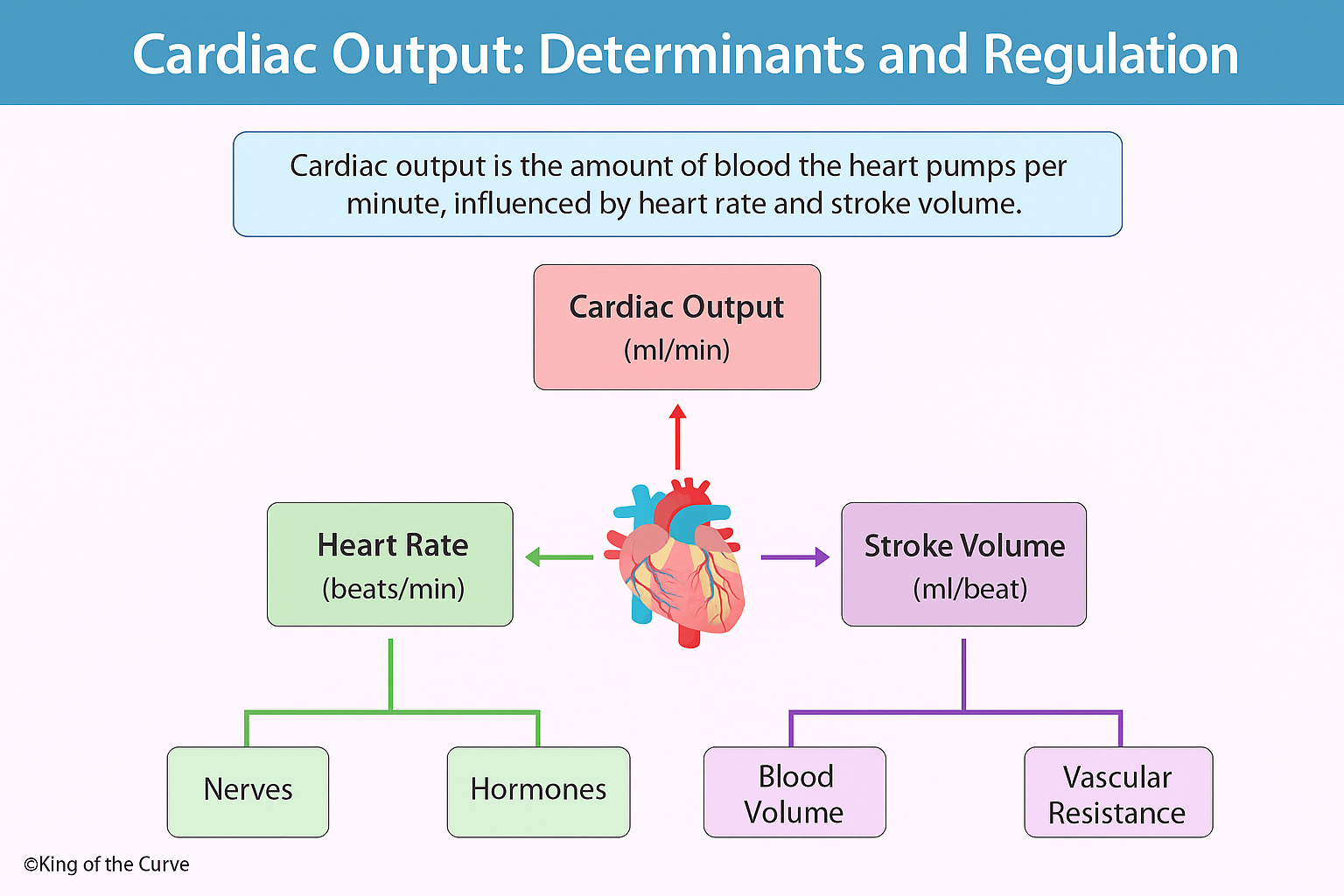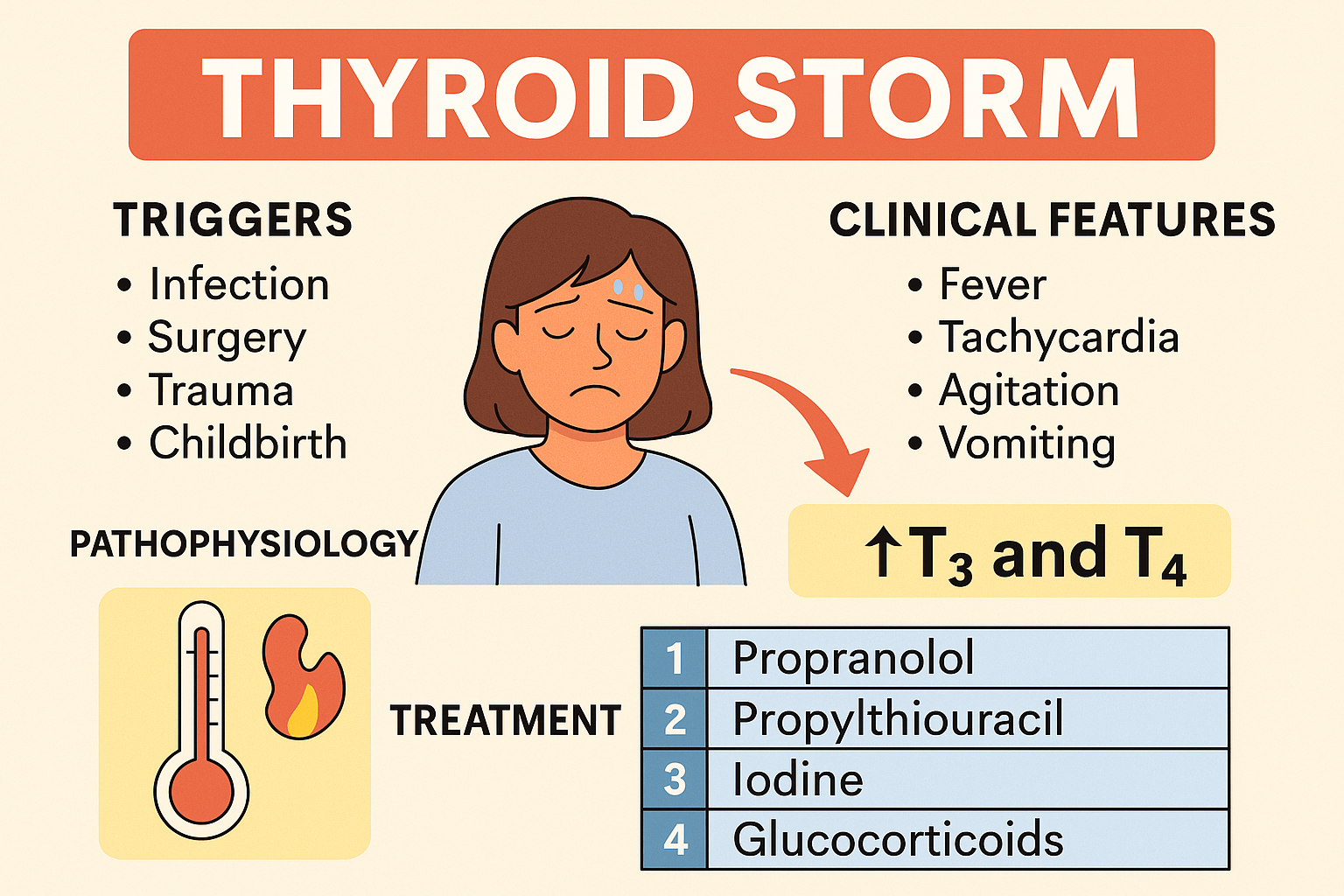
💧 Countercurrent Mechanism: How the Nephron Concentrates Urine (Made Simple)
Learn how the nephron’s countercurrent multiplier and exchanger concentrate urine. Includes visual breakdowns and Step 1-style integration for renal physiology.

❤️ Frank-Starling Law: Cardiac Output, Stretch, and Step 1 Integration
Learn the Frank-Starling law of the heart with visual mnemonics, curves, and clinical connections. Master cardiac output regulation for Step 1 and beyond.

🧠 Glasgow Coma Scale (GCS): How to Score It Fast and Never Forget It
Learn how to use and remember the Glasgow Coma Scale for trauma and neuro cases. Includes scoring breakdown, mnemonics, and clinical examples for Step 1, Step 2 CK, and rotations.

💉 Mean Arterial Pressure (MAP): Formula, Physiology & Step 1 Clues
Master the MAP formula, physiology of perfusion, and how it shows up on USMLE Step 1 and 2 CK. Includes clinical examples and KOTC mnemonics.

🧪 Acid-Base Disorders Made Easy: Mnemonics, ABGs, and Clinical Patterns
Master metabolic and respiratory acidosis/alkalosis with formulas, charts, and clinical case tips. Perfect for USMLE Step 1, Step 2, and wards.

❤️ Cardiac Output: How Your Heart Keeps Up the Flow
Learn what affects cardiac output and how it's regulated with this KOTC visual guide. Ideal for USMLE, NCLEX, and MCAT prep.

🩺 Understanding Starling Forces: Fluid Movement and Clinical Correlates
Learn how Starling forces control capillary fluid movement and how they apply to clinical scenarios like edema, CHF, and nephrotic syndrome.

🩺 How Medical Students Can Beat Burnout During Clinical Rotations
Learn how to prevent burnout during clinical rotations with these proven strategies. From managing time to using KOTC tools, stay sharp and stress-free.

Homeostasis: How the Body Stays in Balance – MCAT Essentials
Master the concept of homeostasis for the MCAT. Learn about physiological balance, control systems, set points, and MCAT-relevant hormones like insulin and ADH.

🧠 Observational Learning: Mastering Behavior Through Imitation
Discover how observational learning shapes behavior. Learn the mechanisms behind learning by watching others, with real-world applications for the MCAT and psychology.

Negative vs Positive Feedback Loops: MCAT Physiology Fundamentals
Understand negative and positive feedback loops for the MCAT. Master hormonal regulation, homeostasis, and signaling control with KOTC visuals and examples.

Sympathetic vs Parasympathetic Nervous System: MCAT Made Easy
Master the autonomic nervous system for the MCAT. Understand the differences between sympathetic and parasympathetic pathways, neurotransmitters, and test-day applications.

🧠 Guillain-Barré Syndrome (GBS): Ascending Paralysis on the USMLE
Recognize the signs and pathophysiology of Guillain-Barré Syndrome (GBS) for the USMLE. Learn its triggers, diagnostics, and treatment in this concise, high-yield clinical neurology review.

💦 Nephrotic Syndrome: The Protein-Leaking Kidney Crisis for the USMLE
Understand the hallmarks, causes, and diagnostic clues of nephrotic syndrome. This high-yield USMLE blog includes a KOTC visual and tips for distinguishing key nephrotic diseases.

Causes of Portal Hypertension: A High-Yield USMLE Review
Master the causes of portal hypertension for the USMLE. This King of the Curve visual breaks down prehepatic, intrahepatic, and posthepatic categories with clinical relevance.

Understanding Homeostasis for the MCAT: Feedback Loops, Hormones, and Exam Strategies
Master the concept of homeostasis for the MCAT with this KOTC breakdown. Learn about feedback loops, hormone regulation, and how to spot homeostatic mechanisms in MCAT passages.

🧪 G6PD Deficiency: The Hemolytic Anemia Triggered by Stress
Master the causes, diagnosis, and USMLE questions linked to G6PD deficiency. This high-yield guide covers triggers, symptoms, and how to catch it on Step 1/2 exams.

🔥 Thyroid Storm: A Deadly Endocrine Emergency for the USMLE
Learn to identify and manage thyroid storm, a life-threatening complication of hyperthyroidism. This USMLE-ready guide covers symptoms, triggers, diagnosis, and treatment using a stepwise breakdown and KOTC visual.

🩺 Tumor Lysis Syndrome (TLS): Emergency Oncologic Complication for the USMLE
Learn how to recognize and manage Tumor Lysis Syndrome (TLS), a life-threatening emergency often tested on USMLE. Includes lab patterns, pathophysiology, and a rapid treatment approach.

🧠 Hyponatremia in Hospitalized Patients: A High-Yield Electrolyte Disturbance for the USMLE
Discover the pathophysiology, causes, and USMLE-style clinical presentations of hyponatremia in hospitalized patients. Includes a high-yield KOTC science visual.
